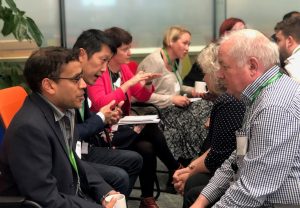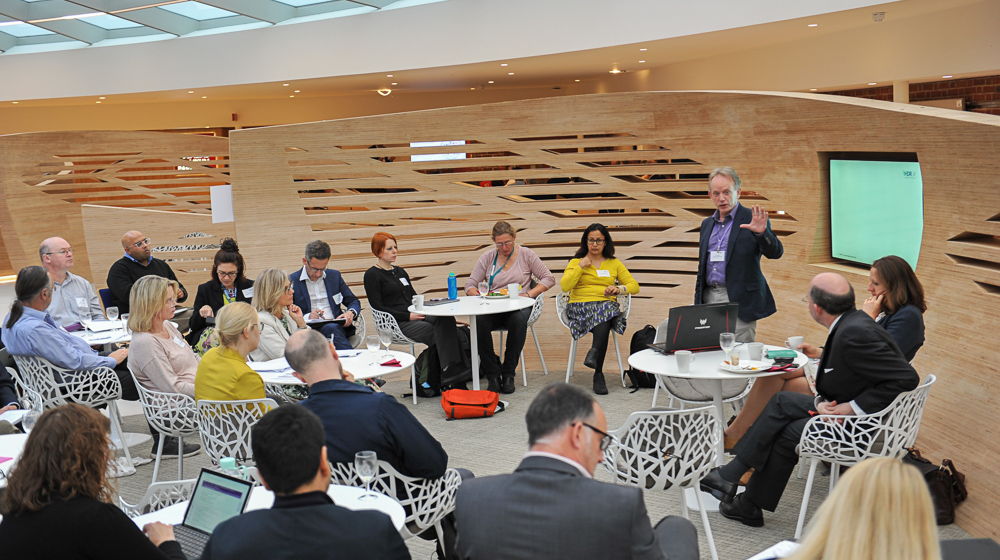What is PPIE?
Patient and Public Involvement and Engagement, or PPIE for short, is key to everything we do at HDR UK. It can be separated into two parts – Involvement and Engagement.
Patient and Public Involvement means that activities and research are carried out ‘with’ or ‘by’ members of the public or patients, rather than ‘to’, ‘about’ or ‘for’ them. Patients and members of the public are actively involvement in the development, running and management of research projects or activities. Patient and Public Engagement is all about ensuring that information and outcomes from research or activities are disseminated to patients and the public, so that they can be informed of our work. It also allows us to gain insights and input from patients and the public.
Why is PPIE important?
 PPIE is vital in the development of different areas of our work, including those where there is a level of uncertainty. Involving patients and members of the public will help us become a trusted voice on these complex issues and will be key in helping build a system that is worthy of their trust and confidence in using health data for research. It will also help develop the public’s understanding and has the potential to create ambassadors.
PPIE is vital in the development of different areas of our work, including those where there is a level of uncertainty. Involving patients and members of the public will help us become a trusted voice on these complex issues and will be key in helping build a system that is worthy of their trust and confidence in using health data for research. It will also help develop the public’s understanding and has the potential to create ambassadors.
Get involved
Patient and public involvement and engagement is for everyone. Whether you have never done it before or don’t know much about health data research, we want to hear from you! Only by including a wide range of perspectives across our work can we ensure that patients and the public can have confidence in the access to and use of health data for research.

We’ve been working to grow our patient and public involvement and engagement activities, and are keen to work with a wide range of people in as many different projects and areas of our work as possible. You can get involved in as much or as little as you like and through our growing range of opportunities we’ll help find something that suits your needs. If you want to learn more about health data research and how it works, you can view our health data research explained page.
Click the button below to sign up to HDR UK Voices, and browse our other pages to find out about opportunities to get involved, and learn about the impact that patient and public involvement has across HDR UK.
Join our HDR UK Voices Network and use your voice to make a difference
“The object of health data research is to improve patients’ lives and this is impossible without PPIE. Unless researchers engage and involve actual patients, how will they know what improvement really looks like? Health data research uses patient data, and patients should be involved in decisions about how and what it is used for. It is a basic courtesy that should be adhered to in all research. Patients graciously give permission for their data to be used and they should be afforded the opportunity to be involved in deciding on its application.” – Rosanna Fennessey, Public Contributor for the Gut Reaction Health Data Research Hub.
If you would like to speak to someone in the Patient and Public Involvement and Engagement team directly, please email Involvement@hdruk.ac.uk.

 PPIE
PPIE 



